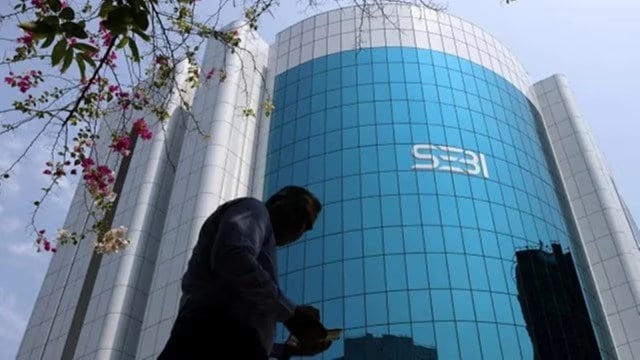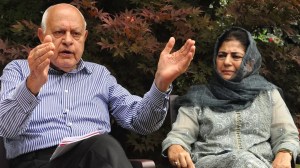NSE co-location case: How Sebi found violations in 2019 but saw no evidence in 2024
The NSE faced allegations that some brokers got preferential access through the co-location facility at the stock exchange, early login and 'dark fiber' -- which can allow a trader a split-second faster access to data feed of an exchange.
 According to the latest Sebi order, all the evidences, material and objective facts which have formed the basis of current SCN (show-cause notice) were also part of the earlier show cause notice and were examined by SAT and based on such examination, it was held that there was no evidence to suggest violation of PFUTP Regulations or SECC Regulations by the NSE and its employees.
According to the latest Sebi order, all the evidences, material and objective facts which have formed the basis of current SCN (show-cause notice) were also part of the earlier show cause notice and were examined by SAT and based on such examination, it was held that there was no evidence to suggest violation of PFUTP Regulations or SECC Regulations by the NSE and its employees. Five years after the Securities and Exchange Board of India (SEBI) came down heavily on the National Stock Exchange (NSE) for alleged lapses in high-frequency trading offered through its co-location (colo) facility, directing the exchange to disgorge Rs 624.89 crore and prohibiting seven top officials including Ravi Narain and Chitra Ramakrishna, both former managing directors and CEOs, from associating with a listed company or a market intermediary for a period of five years, the market regulator has disposed of the charges and let them off the hook.
The Sebi order will benefit Ravi Narain and Chitra Ramkrishna, Anand Subramanian (former group operating officer), Ravindra Apte and Umesh Jain (former chief technical officers), Mahesh Soparkar (former senior vice president – special projects), Deviprasad Singh (former head of the IT operations) and the NSE which has been gearing up for its mega IPO.
What’s the co-location case?
The NSE faced allegations that some brokers got preferential access through the co-location facility at the stock exchange, early login and ‘dark fiber’ — which can allow a trader a split-second faster access to data feed of an exchange. Even a split-second faster access is considered to result in huge gains for a trader. The allegations of unfair access were first raised by a whistle-blower in January 2015.
The whistle-blower wrote to the Sebi alleging that a few brokers were able to log into the NSE systems with better hardware specifications while engaged in algorithmic trading, allowing them unfair access and advantage. The unfair access issue pertains to 2012-14 when NSE used to disseminate price information through a unicast system. In such a system information is disseminated to one member after another. The letter to Sebi alleged that sophisticated market manipulation has been taking place for several years at the NSE co-location centre. It also said that NSE had allowed non-empanelled internet service provider (ISP) to lay fiber in its premises for few stock brokers.
WTM order in 2024 says low probability of collusion, cites lack of evidence:
According to the latest Sebi order, all the evidences, material and objective facts which have formed the basis of current SCN (show-cause notice) were also part of the earlier show cause notice and were examined by SAT and based on such examination, it was held that there was no evidence to suggest violation of PFUTP Regulations or SECC Regulations by the NSE and its employees. “When these evidences, material and objective facts did not lead to violation of PFUTP Regulations or SECC Regulations, they cannot lead to determination of collusion or connivance where the establishment of violation would additionally require presence of “conspiracy” or “secret or indirect consent or permission” making such establishment of violation more difficult,” the order said.
The fact that OPG Securities was logging on to the secondary server till May 2015, even after the warning in the first half of June 2012 does indicate indirect consent by the NSE to OPG, Sebi order said. However, the fact that 93 trading members were logging to the secondary server during this period reduces the probability of collusion or connivance. Further, it is seen that in spite of multiple reports of Deloitte, EY, SEBI External Committee where external experts have examined email dumps, communication record for a reasonable period of time, still, no direct or indirect evidences, material, objective facts of collusion and connivance have been reported. This has further reduced the probability of collusion or connivance between OPG and its directors with Noticees (seven NSE officials), the regulator said.
Sebi orders in 2019, 2021 found violations:
On April 30, 2019, Sebi came down heavily on NSE for alleged lapses in high-frequency trading offered through its co-location facility and directed to disgorge Rs 624.89 crore and barred the exchange from accessing the market for funds for six months. Sebi also asked Narain and Ramkrishna to disgorge 25 per cent of their respective salaries drawn during a certain period. They were also prohibited from associating with a listed company or a market infrastructure institution or any other market intermediary for a period of five years.
In 2021, SEBI in its 96-page adjudication order said NSE failed to comply with the provisions of Stock Exchange and Clearing Corporation (SECC) Regulations in “letter and spirit” and Ramkrishna and Narain are “vicariously liable for the acts of omissions/commissions committed by NSE during the investigation period”.
SEBI said the conduct of the NSE and Ramkrishna are “blameworthy being in defiance of the obligations casted under SECC Regulations”. “… the default is grave and the gravity of this matter cannot be ignored. Therefore, no lenient view should be taken and the case deserves imposition of monetary penalty…,” said SEBI order passed by adjudicating officer Amit Pradhan.
The adjudication by SEBI has concluded that NSE failed to provide a level playing field for members subscribing to its tick-by-tick data feed system. This TBT data feed is used for algorithmic trading.
However, January 2023, the Securities Appellate Tribunal (SAT) set aside market regulator SEBI’s Rs 625 crore disgorgement order against the NSE, its ex-CEOs Chitra Ramkrishna and Ravi Narain in the co-location scam. In its order, SAT pulled up the market regulator, asking, “how SEBI directed NSE to conduct an investigation against itself.”
Action against OPG:
In a separate order on Friday, SEBI directed Delhi-based broker OPG Securities Pvt Ltd, owned by Sanjay Gupta, Sangeeta Gupta and Om Prakash Gupta, to disgorge Rs 85.25 crore with an interest of 12 per cent (per annum). “I hold that the total amount of unlawful gains of Rs 85.25 crore (Rs 40.41 crore as intraday and Rs 44.84 crore as overnight) is held to be the unlawful gains that OPG earned by virtue of consistently connecting to the secondary server of the NSE colocation facility.
Key accusations against the broker included the alleged collusion between the NSE and OPG whereby the latter was accused of logging in to Tick by Tick Data Feed (TBT) ahead of other members.
Investigations by CBI:
CBI probe into the NSE co-location scam has revealed that one of the key accused OPG Securities intentionally logged into the secondary server of the exchange on 670 occasions in five years from 2010, for illegal profiteering.
In May 2018, the CBI registered an FIR against a stock broker, Sanjay Gupta promoter of OPG Securities for allegedly manipulating the NSE system for two years to get first access to markets when they opened. The probe agency has alleged that he had managed to manipulate SEBI inquiry against the role of OPG Security in the misuse of TBT (tick-by-tick) architecture of servers by paying bribe to the officials of the stock market regulator. Gupta was booked by the CBI along with unidentified officials of the NSE and stock market regulator SEBI, who could have connived to allow the illegal activity to continue for years.
Ramakrishna was arrested in the co-location scam nearly four years after an FIR was registered by the agency in May 2018. The Income Tax department too began its probe into the alleged tax evasion of any, by brokers and other entities who booked unlawful gains. Ramakrishna was again arrested in the money laundering case by the Enforcement Directorate on July 2022.
Ramakrishna and faceless conman:
Even as the co-location case was going on, Sebi also penalised the NSE and its former MDs and CEOs, Chitra Ramkrishna and Ravi Narain, and others for violating securities contract rules in the case related to the appointment of Anand Subramanian as group operating officer and advisor to the MD. The regulator levied a fine of Rs 3 crore on Ramkrishna, Rs 2 crore each on the NSE, Narain and Subramanian and Rs 6 lakh on V R Narasimhan, who was the chief regulatory officer and chief compliance officer.
Chitra Ramkrishna, who was the MD and CEO of the NSE till 2016, was guided by a faceless conman “Siddha Purusha/Yogi”, a Paramahansa who may be largely dwelling in the Himalayan ranges, for 20 years, says an order issued by market regulator in 2023.
The faceless “yogi” was responsible for the appointment of Anand Subramanian as group operating officer and advisor to the MD, who was not known in the industry. Subramanian was allegedly an accomplice with the unknown person (faceless yogi) who influenced the decision of Ramkrishna and thereby benefitting himself by being re-designated as ‘Group Operating Officer and Advisor to MD’ and having the compensation being paid to him increase substantially each year, upon the advice of the unknown person to Ramakrishna, said the Sebi order signed by Whole-time Member Ananta Barua.
As per the opinion of human psychology expert, Ramkrishna has been exploited by Subramanian by creating another identity in the form of Rigyajursama to guide her to perform her duties according to his wish. Ramkrishna was manipulated by the same man in the form of different identities; one as Subramanian who enjoyed her trust and other as Rigyajursama who had her devotion and dependence,” Sebi said.






- 01
- 02
- 03
- 04
- 05

























